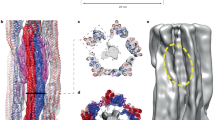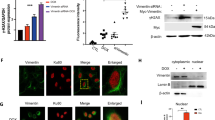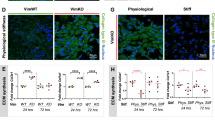Abstract
Vimentin is an intermediate filament that regulates cell attachment and subcellular organization. In this study, vimentin filaments were morphologically altered, and its soluble subunits were rapidly reduced via cadmium chloride treatment. Cadmium chloride stimulated three major mitogen-activated protein kinases (MAPKs): extracellular signal-regulated kinase (ERK), c-Jun N-terminal kinase (JNK), and p38, and led apoptotic pathway via caspase-9 and caspase-3 activations. In order to determine whether MAPKs were involved in this cadmium-induced soluble vimentin disappearance, we applied MAPK- specific inhibitors (PD98059, SP600125, SB203580). These inhibitors did not abolish the cadmium-induced soluble vimentin disappearance. Caspase and proteosome degradation pathway were also not involved in soluble vimentin disappearance. When we observed vimentin levels in soluble and insoluble fractions, soluble vimentin subunits shifted to an insoluble fraction. As we discovered that heat- shock protein 27 (HSP27) was colocalized and physically associated with vimentin in unstressed cells, the roles of HSP27 with regard to vimentin were assessed. HSP27-overexpressing cells prevented morphological alterations of the vimentin filaments, as well as reductions of soluble vimentin, in the cadmium-treated cells. Moreover, HSP27 antisense oligonucleotide augmented these cadmium-induced changes in vimentin. These findings indicate that HSP27 prevents disruption of the vimentin intermediate filament networks and soluble vimentin disappearance, by virtue of its physical interaction with vimentin in cadmium-treated SK-N-SH cells.
Similar content being viewed by others
Article PDF
Author information
Authors and Affiliations
Rights and permissions
This is an Open Access article distributed under the terms of the Creative Commons Attribution Non-Commercial License (http://creativecommons.org/licenses/by-nc/3.0/) which permits unrestricted non-commercial use, distribution, and reproduction in any medium, provided the original work is properly cited.
About this article
Cite this article
Lee, JS., Zhang, MH., Yun, E. et al. Heat shock protein 27 interacts with vimentin and prevents insolubilization of vimentin subunits induced by cadmium. Exp Mol Med 37, 427–435 (2005). https://doi.org/10.1038/emm.2005.53
Published:
Issue date:
DOI: https://doi.org/10.1038/emm.2005.53
Keywords
This article is cited by
-
Small heat-shock proteins and their role in mechanical stress
Cell Stress and Chaperones (2020)
-
Vimentin filaments interact with the actin cortex in mitosis allowing normal cell division
Nature Communications (2019)
-
Recombinant heat shock protein 27 (HSP27/HSPB1) protects against cadmium-induced oxidative stress and toxicity in human cervical cancer cells
Cell Stress and Chaperones (2017)
-
Integrated proteomic and metabolomic analysis to assess the effects of pure and benzo[a]pyrene-loaded carbon black particles on energy metabolism and motility in the human endothelial cell line EA.hy926
Archives of Toxicology (2014)



